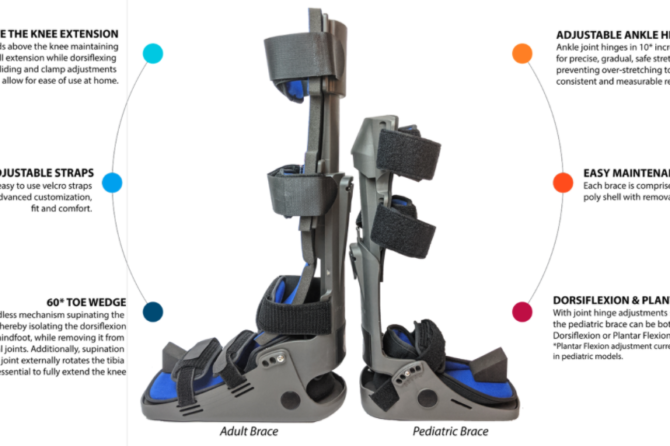
Why Equinus May Be Causing Your Foot Problems
When it comes to keeping ourselves healthy, there is a laundry list of tasks that need attention. Exercising, eating right, getting enough sleep, flossing—and stretching with an equinus brace. You may have known about or even used a night splint for stretching the calf muscles and Achilles tendon. Often, these braces are bulky and can interrupt sleep, resulting in patients abandoning their usage of it.
But technology is constantly making it easier for us to create and stick with healthy habits, such as wearing an equinus brace. The FAAWC would like to introduce you to The Equinus Brace® and Tru Stretch™ from IQ Med and Dr. Patrick DeHeer. But first, what the heck is equinus and it is affecting your personal foot health?
What Is Equinus Deformity?
Equinus deformity is a term used to indicate limited ankle motion caused by a restriction of some sort. This may not sound like a big deal, but when anything (we’ll get to causes in a moment) limits the natural motion of the ankle, your foot will need to compromise and adapt in some way. This could include early heal lifting during walking, a flattening of the arch, or a reliance on toe-walking. Eventually, other foot, leg, and even back problems may occur.
What Causes Equinus Deformity?
Equinus may have one or more causes. Most often, equinus results from a tightness or shortening of the posterior calf muscles or the Achilles tendon. This can happen due to growth, injury recovery such as being on crutches, or even just from wearing high heeled shoes too much. Slightly less often, ankle motion is limited at the joint by another bone.
Who Is at Risk for Equinus Deformity?
Equinus is difficult to recognize and seek treatment for because many people don’t realize it is actually an underlying cause of their other foot issues. Patients will visit a podiatrist for a separate problem, but may walk out with a recommendation for an equinus brace as part of their treatment plan. In fact, equinus is a related condition to over 35% of all other foot pathologies.
If you are experiencing Achilles tendonitis, plantar fasciitis, adult or pediatric flatfoot, pain in the ball of the foot (Metatarsalgia), ankle pain, shin splints, or a variety of other foot conditions, equinus may be the underlying cause and should be addressed as part of your comprehensive treatment plan.
What Is an Equinus Brace and Why Do I Need It?
Equinus braces, often called night splints, are designed to gently stretch the calf muscles and Achilles tendon to alleviate pain and help resolve further issues you might be experiencing. A good brace will offer support above and below the knee, be fully adjustable to varying sizes and degrees, and have additional features such as toe wedges.
While many braces recommend overnight or multi-hour usage, patients often find their time or sleep interrupted and then stop using the brace. But modern advances from IQ Med mean that their Equinus Brace only needs to be worn for one hour a day to fully benefit from the treatment. You can read more about the benefits of the Equinus Brace on their website—fixequinus.com
So, Do I Have Equinus?
Only an examination from a podiatrist can determine if you are experiencing equinus deformity and will need an Equinus Brace. If a brace is recommended, your FAAWC provider will help you with getting an Equinus Brace from IQ Med and create an easy-to-follow treatment plan to get you back on your newly-healthy feet in no time. Call the FAAWC for an appointment today to talk to your provider about equinus.
Leave a reply